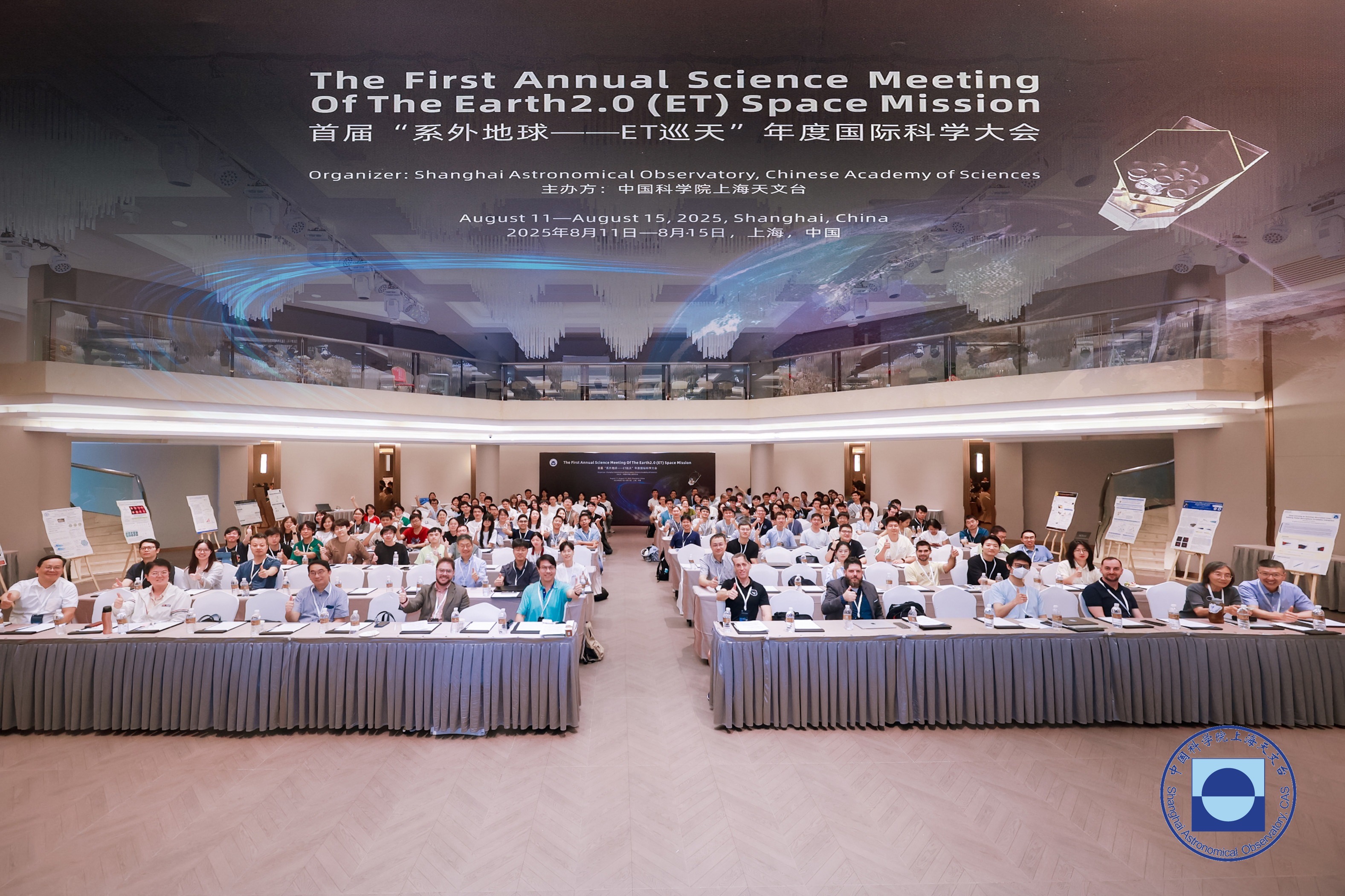First “Earth 2.0 Space Mission” Annual International Science Meeting Successfully Held in Shanghai
World-leading astronomers convene to chart the ET mission’s research roadmap
From August 11–15, 2025, the Shanghai Astronomical Observatory (SHAO) of the Chinese Academy of Sciences hosted the inaugural “Earth 2.0 Space Mission” (Earth 2.0, hereafter ET) Annual International Science Meeting in Shanghai. Centered on the ET space mission, the conference built a high-level international platform for exchange on exoplanets, asteroseismology, stellar & Galactic archaeology, and time-domain astronomy.
The meeting drew over 170 in-person and more than 70 online participants from 10+ countries. Institutions represented included NASA; Harvard University; the Massachusetts Institute of Technology; the California Institute of Technology; The Ohio State University; the University of Hawai‘i; the University of Maryland; the Instituto de Astrofísica de Andalucía (IAA), Spain; the University of Toronto, Canada; the Max Planck Institute for Astronomy (MPIA), Heidelberg, Germany; the University of Sydney, the University of Southern Queensland, and the Australian National University; the Korea Astronomy and Space Science Institute (KASI); the University of Warwick, the University of Manchester, and the University of Edinburgh, UK; the University of Bern and the University of Geneva, Switzerland; the University of Warsaw, Poland; Osaka University, Japan; and the Weizmann Institute of Science, Israel, among more than twenty internationally renowned universities and research institutes.
Chinese participants came from the Shanghai Astronomical Observatory, the National Astronomical Observatories, and Purple Mountain Observatory of the Chinese Academy of Sciences, as well as over twenty domestic institutions including Westlake University, Nanjing University, Sun Yat-sen University, Peking University, Tsinghua University, Shanghai Jiao Tong University, and the University of Science and Technology of China.
Over five days the program featured plenary invited talks, working-group updates, parallel sessions, and wrap-up discussions, with 120+ oral and poster contributions spanning both cutting-edge results and systematic reviews. The meeting took stock of early progress and key technical preparations across ET science themes, further refined working-group roles and collaboration mechanisms, and, through deep international exchange, integrated high-quality global research resources.
Highlights & Key Outcomes
1. Clarified phased goals and technical roadmaps for exoplanet detection and validation, asteroseismology, stellar & Galactic archaeology, and time-domain science.
2.
Reached consensus on observing strategies, target selection and follow-up, observation simulations, and data-pipeline requirements, and proposed an executable timeline.
3. Strengthened the international collaboration network and commitment to open data sharing, advancing coordinated development of data-processing workflows, algorithms, and software platforms.
4. Outlined the priority science questions and working-group milestones for the coming year, laying the groundwork for subsequent mission implementation.
Participants noted that ET’s wide field of view and ultra-high-precision photometry will significantly boost the discovery rate of Earth-like and potentially habitable worlds. The successful meeting injects fresh momentum into China’s original innovation and international cooperation in these research areas.

Download attachments: